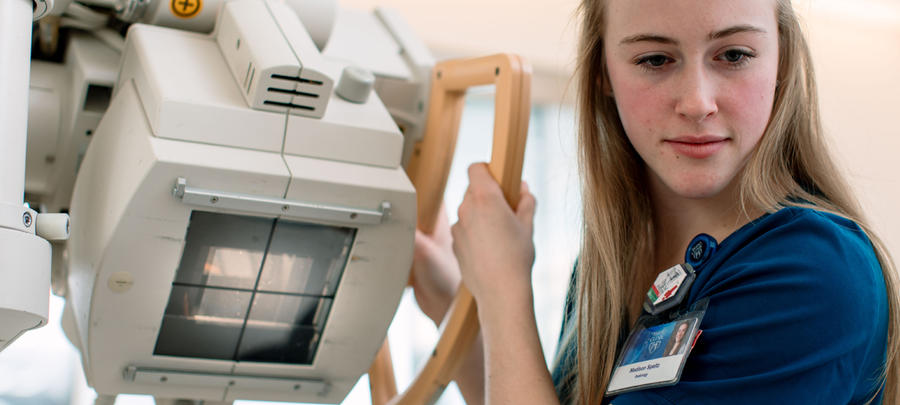The Bachelor of Science in Health Professions (BSHP) Radiography program
delivers an exceptional educational experience by providing high-quality didactic and clinical experiences that prepare students to become well-rounded, fully competent radiographers in an environment based on teamwork and mutual respect.
Radiography is an exciting and challenging career involving the use of highly sophisticated equipment to create x-rays – anatomical images that are used by physicians to diagnose disease, injury or disability. Radiographers have direct patient contact and are valuable members of the primary health care team.
New for Summer 2019: Accelerated Program!
Starting in the summer of 2019, the Radiography Track will begin in the summer between the sophomore and junior year and be completed by the end of the fall semester of the senior year--a semester early! For questions about these changes, including financial aid implications, please contact us at umrbshp@r.umn.edu.
Careers
Radiographers make diagnostic x-ray images of patients. Becoming a radiographer requires competence in a variety of equipment, including computed tomography, mammography and magnetic resonance imaging (MRI).
Employment
Radiographers work in a variety of settings, including hospitals, clinics, doctors’ offices and industry. Work hours are varied with some on-call requirements (including evenings, nights, holidays and weekends).
Job Outlook
Employment of radiologic technologists is projected to grow nine percent from 2014 to 2024, according to the Department of Labor. As the population grows older, there will be an increase in medical conditions, such as cancer and Alzheimer’s disease, which require imaging as a tool for making diagnoses. In addition, diagnostic imaging is increasingly being used to not only diagnose illness but to also monitor treatment.
Salary
On average, radiographers earn an annual salary of $67,070/yr in Minnesota (data as of 2018 from the Bureau of Labor Statistics).
